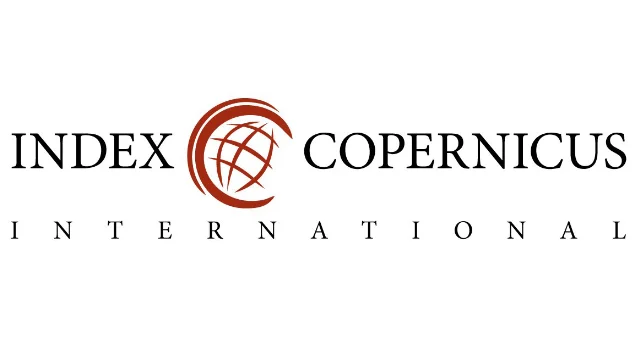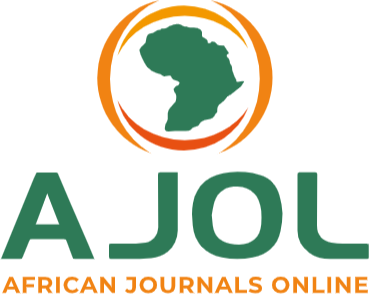Assessment of Background Ionizing Radiation and Radiological Health Risks in Federal Government Girls’ College, Imiringi, Nigeria
Keywords:
Absorbed dose, background radiation, cancer risk, Effective doseAbstract
Ionizing radiation poses health risks when exposure surpasses certain thresholds for humans. In the vicinity of Federal Government College Imiringi, crude oil activities potentially impact levels of naturally occurring radioactive materials. Thus, it's essential to evaluate potential impacts on students. Consequently, an assessment was conducted involving in-situ measurement of terrestrial gamma radiation and calculation of radiological health risks. This assessment utilized a well-calibrated RadMonitor-200 and established radiological equations. The study area was partitioned into three zones (Zone A, Zone B, and Zone C). Thirty sampling points were selected, with ten in each zone. Background ionizing radiation (BIR) results across the zones ranged from 0.011 to 0.015 mRhr-1, 0.008 to 0.21 mRhr-1, and 0.011 to 0.19 mRhr-1. Mean values were 0.015±0.002 mRhr-1, 0.017±0.003 mRhr-1, and 0.015±0.002 mRhr-1 for Zone A, Zone B, and Zone C respectively, with an overall mean of 0.017 mRhr-1. This suggests a slight exceedance of the recommended safe BIR value of 0.013 mRhr-1.The mean absorbed dose in Zones A, B, and C were 126.15±0.003, 147.03±0.002, and 126.15±0.002 nGyhr-1 respectively. The annual effective dose equivalent (AEDE) remained below the permissible safe limit of 1.0 mSvyr-1. Excess lifetime cancer risk (ELCR) ranged from 0.57 x10-3 to 0.89 x10-3, 0.49x10-3 to 0.94x10-3, and 0.57x10-3 to 0.85 x10-3 with mean values of 0.70 x10-3±0.001, 0.78 x10-3±0.001, and 0.71 x10-3 ±0.001 in Zones A, B, and C respectively, which were above 0.29x10-3. However, these elevations do not warrant the classification of the area as radiologically unsafe. Nevertheless, regular monitoring is advisable, particularly due to the observation of a potential methane gas emission within the college premises. The findings of this research should serve as baseline data for future spectrometry analyses of soil, borehole, and surface waters in the college's vicinity.
Similar Articles
- Yakubu Mohammed, Habu Tela Abba, Mustapha Suleiman Gimba, Determination of the Gross Alpha and Beta Activity Concentration in Groundwater from Damaturu , Communication In Physical Sciences: Vol. 8 No. 2 (2022): VOLUME 8 ISSUE 2
- Tope Oyebade, Chemical Pollutants and Human Vulnerability: An Integrated Review of Environmental Chemistry and Public Health , Communication In Physical Sciences: Vol. 9 No. 4 (2023): VOLUME 9 ISSUE 4
- Emeka Chima Ogoko, Aletan, Uduak Irene, Osu Charles Ikenna, Henrietta Ijeoma Kelle, Nnamdi Ibezim Ogoko, Heavy Metal Status and Health Risks Assessment of Some Local Alcoholic and Non-Alcoholic Beverages Consumed in Aba, Nigeria , Communication In Physical Sciences: Vol. 11 No. 4 (2024): VOLUME 11 ISSUE 4
- Kingsley Ochommadu Kelechi , Onwubuariri Nnamdi Chukwuebuka, Chiazor Faustina Jisieike, Ezere, Uchechi Ahunna, Muyiwa Michael Orosun, Chisom Loveth Kelechi, Health Risk Assessment of Heavy Metal Contamination in Water Sources at Michael Okpara University of Agriculture , Communication In Physical Sciences: Vol. 12 No. 3 (2025): VOLUME 12 ISSUE 3
- Kelle Henrietta Ijeoma, Oluade Oludare Abiola, Achem Daniel, Human Health Risk Assessment of Pesticide Residues in Solanum lycopersicum Fruit Sold in Lagos Metropolis, South-West Nigeria , Communication In Physical Sciences: Vol. 5 No. 4 (2020): VOLUME 5 ISSUE 4
- Olusegun Sowole, Solar UV-Radiation Absorption by Stratospheric Ozone in Lagos Southwest of Nigeria , Communication In Physical Sciences: Vol. 5 No. 4 (2020): VOLUME 5 ISSUE 4
- M. T. Bisiriyu, Fractionation and Characterization of Asphaltenic and Resinous Fractions of Natural Bitumen , Communication In Physical Sciences: Vol. 5 No. 2 (2020): VOLUME 5 ISSUE 2
- Okoro Gladys Ihuoma, Nnochiri Ifeoma U., Design and Implementation of an IoT Microcontroller Power Protection and Control System , Communication In Physical Sciences: Vol. 12 No. 5 (2025): Vol 12 Issue 5
- Hauwa Muhammad, Estimated Dietary Intake of Essential Trace Elements from Selected fruits and vegetables in Minna town, Nigeria , Communication In Physical Sciences: Vol. 12 No. 3 (2025): VOLUME 12 ISSUE 3
- Enefiok Archibong Etuk, Omankwu, Obinnaya Chinecherem Beloved, Human-AI Collaboration: Enhancing Decision-Making in Critical Sectors , Communication In Physical Sciences: Vol. 12 No. 2 (2025): VOLUME 12 ISSUE 2
You may also start an advanced similarity search for this article.



